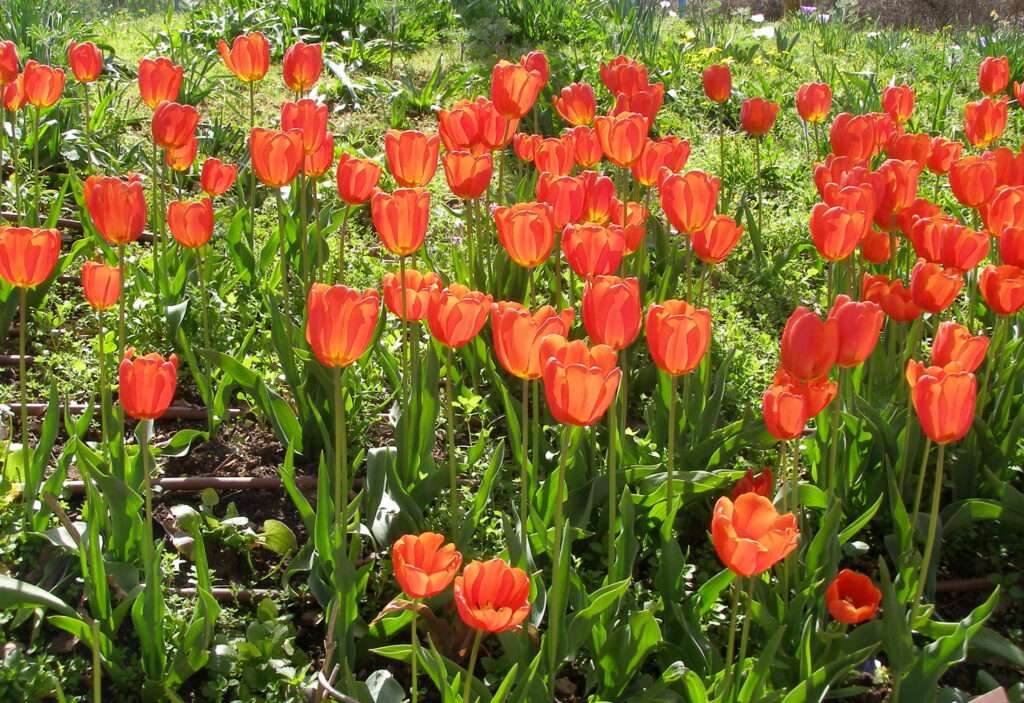
Tulips are upright flowers that have long, broad, parallel-veined leaves and a single or double cup-shaped flower at the stem’s top. The blossoms come in a variety of hues, from red to yellow to white. Some tulips have different colors because of a viral illness that aphids spread to the plants. The fruit of the tulip is an ellipsoid or globe-shaped capsule with a leathery covering. Two rows of flat, disc-shaped seeds are seen in each chamber of each capsule. Very thin seed coverings and endosperm that typically does not fill the entire seed are characteristics of these light to dark brown seeds.
Tulip Care
In areas with damp, chilly to cold winters and warm, dry summers, tulips thrive as perennials. Depending on their size, place the bulbs 2 to 5 inches apart, pointed ends facing up. Planting tulips in clusters of about 10 bulbs tends to improve their presentation.
Tulips, particularly the hybrid types, are occasionally grown as annuals. In this instance, after the bulbs have finished blooming, you can dig them up, get rid of them, and then plant summer flowers in their place. In areas with cool or cold winters, tulips are very simple to grow, however hybrid varieties do need to be divided periodically to prevent wilting.

Light
Tulips of all types prefer direct sunlight. However, keep in mind that in the early spring when tulips are actively growing, regions under deciduous trees that are gloomy in the summer are generally sunlit. Tulips and other spring bulbs can therefore be grown in these areas, which can be great.
Water
After planting the bulbs, give them a good quick soak in water. After that, save additional watering for prolonged dry periods. Don’t water your tulips at all if your area experiences rain every week or two. Watering every two weeks is advised in arid areas.
Temperature and Humidity
The majority of USDA zones 3 to 8 experience cool-to-cold winters and dry, warm summers, which are ideal growing conditions for tulips. In areas with warm winter temperatures, they must be planted as annuals from providers who prechill the bulbs because they need 12 to 14 weeks of temperatures below 55 degrees Fahrenheit to bloom.
As high humidity frequently coexists with a lot of spring and summer rain, which can cause bulbs to decay, tulips typically grow better in dry areas as opposed to humid ones.
Fertilizer
After you plant the tulip bulbs, add some compost, bone meal, or granular fertilizer to the planting hole. Follow the directions on the product packaging for how much to use. When they grow once more the next spring, feed them once more. Except for this, no further feeding is required.
Table





